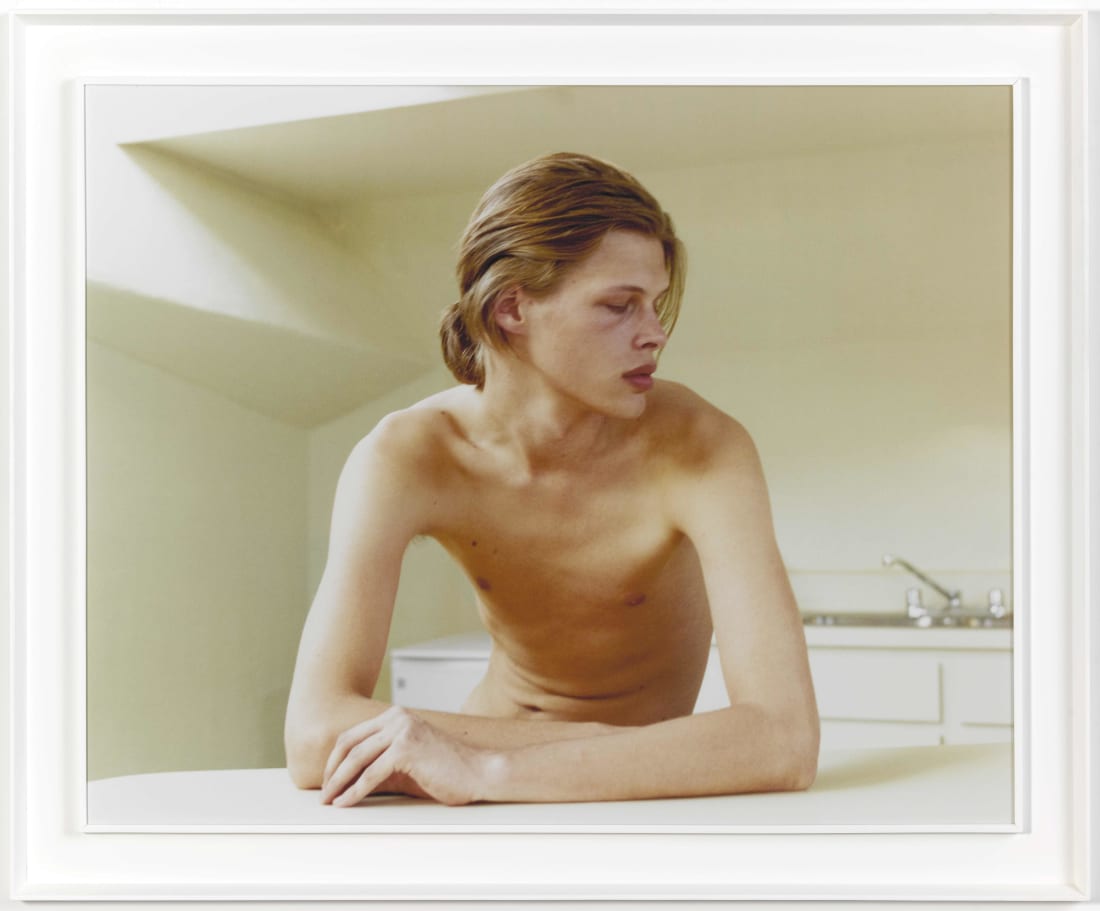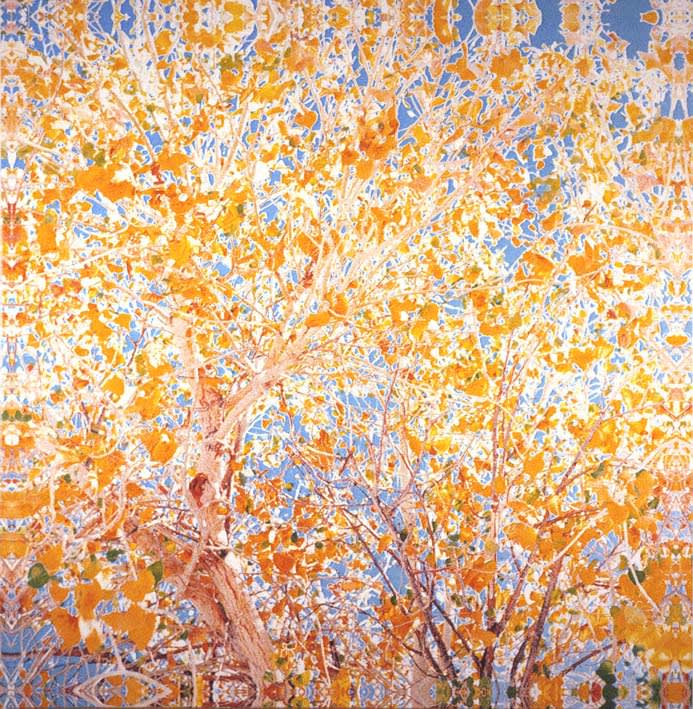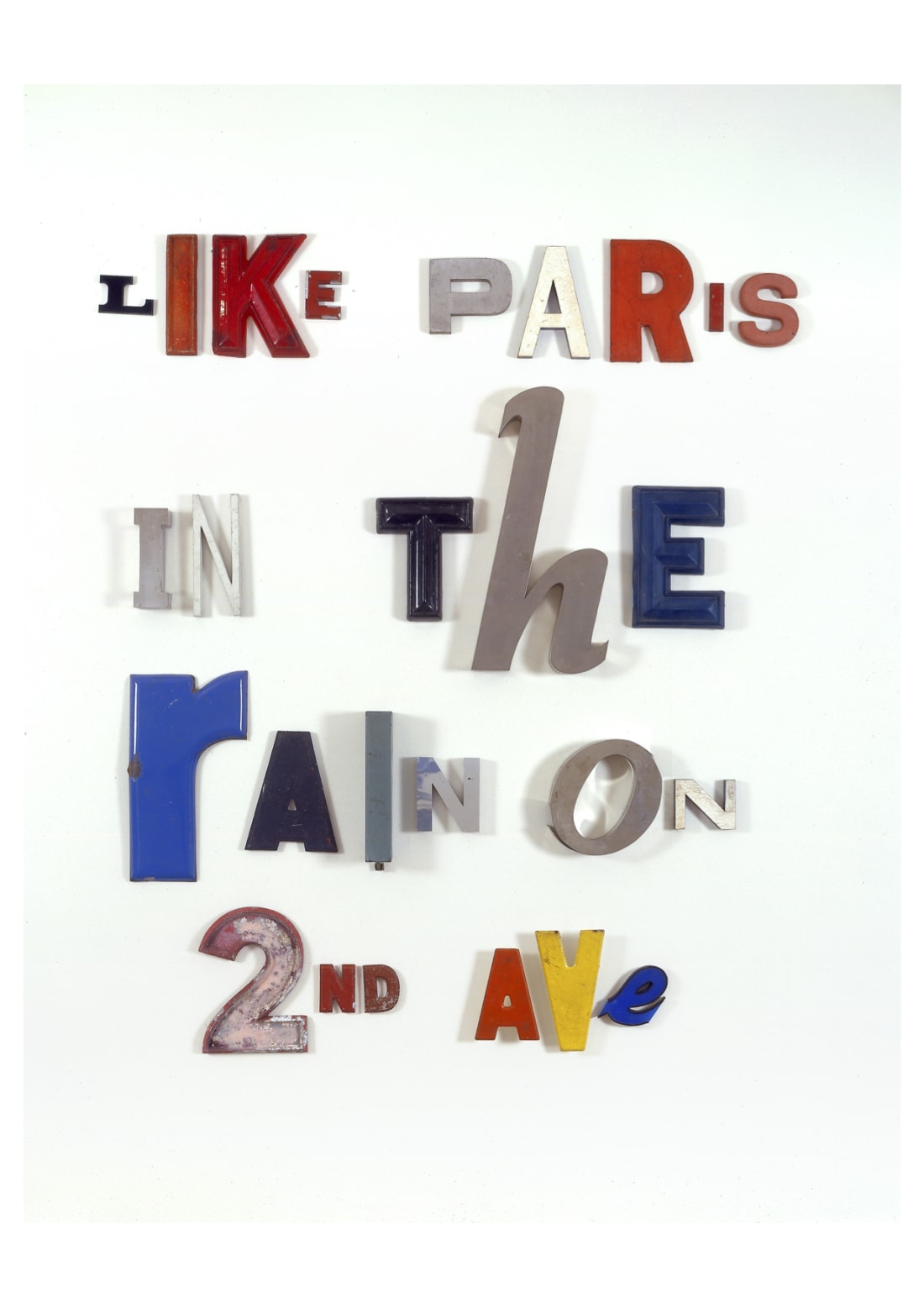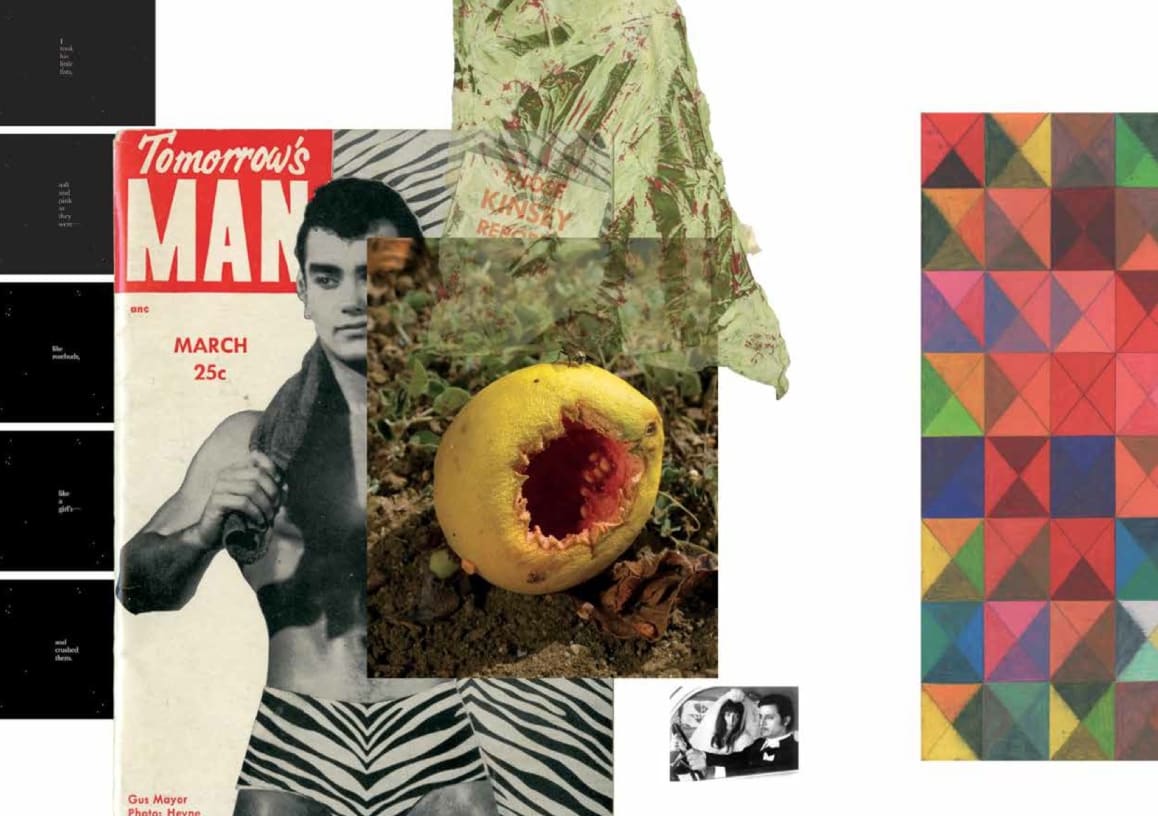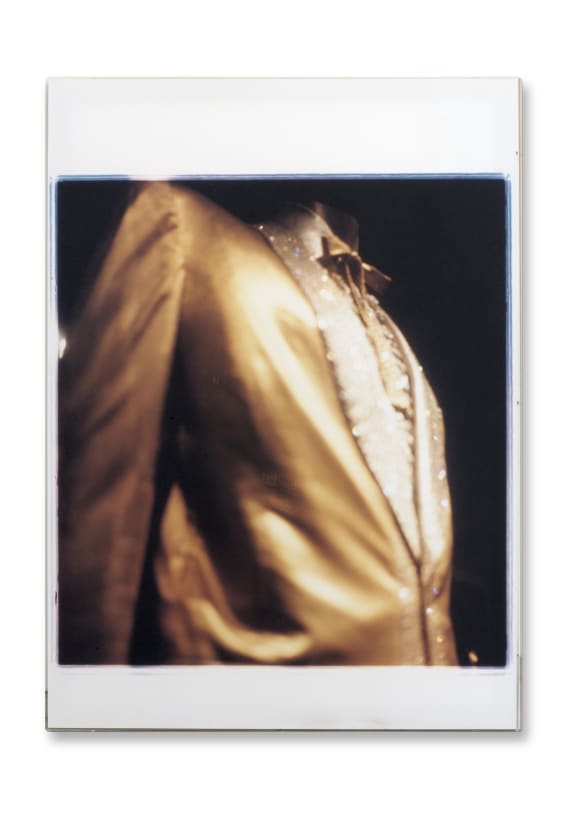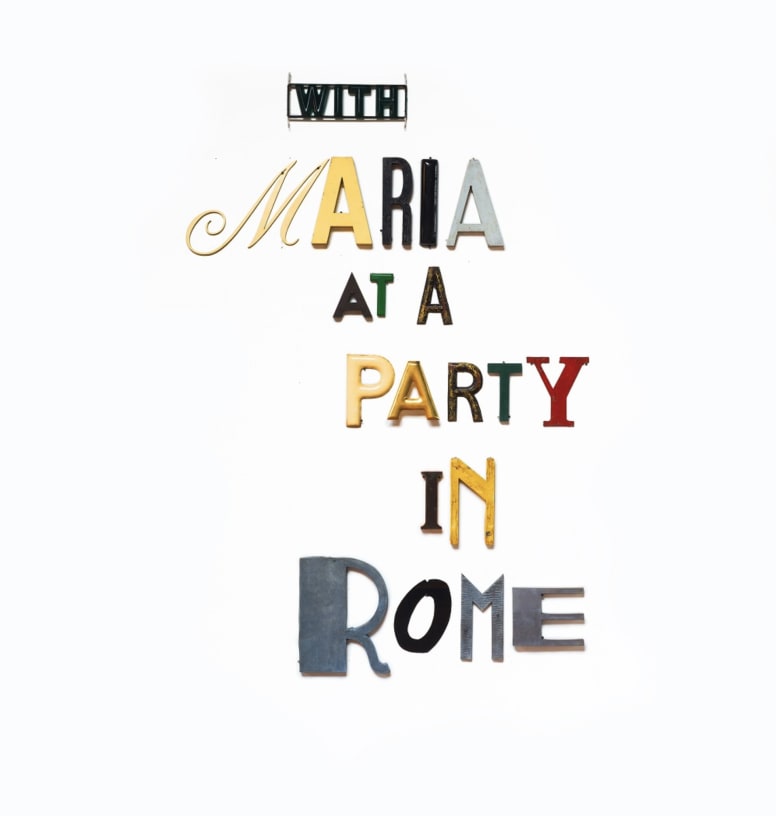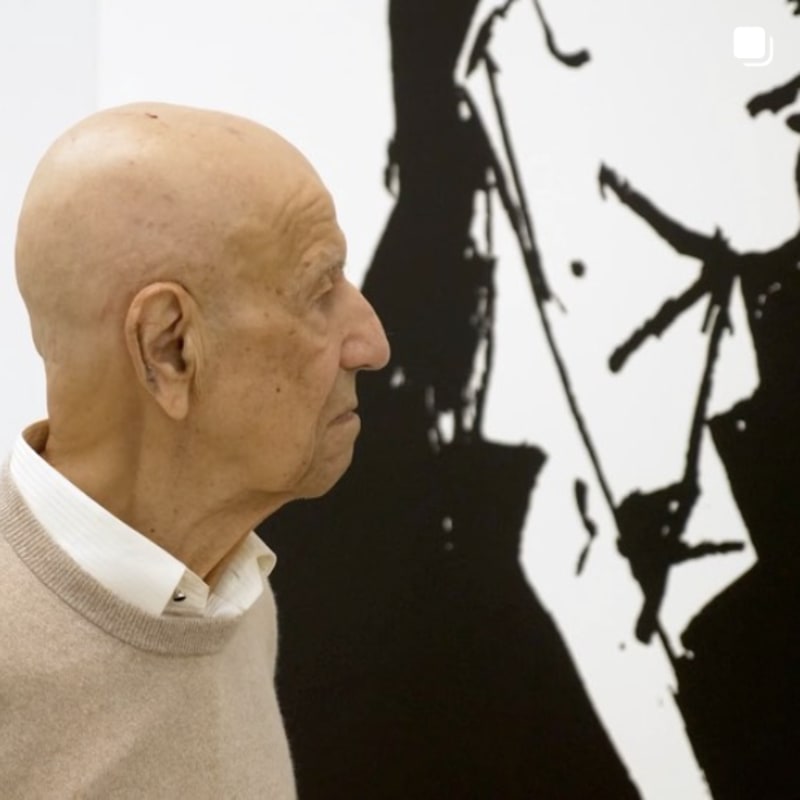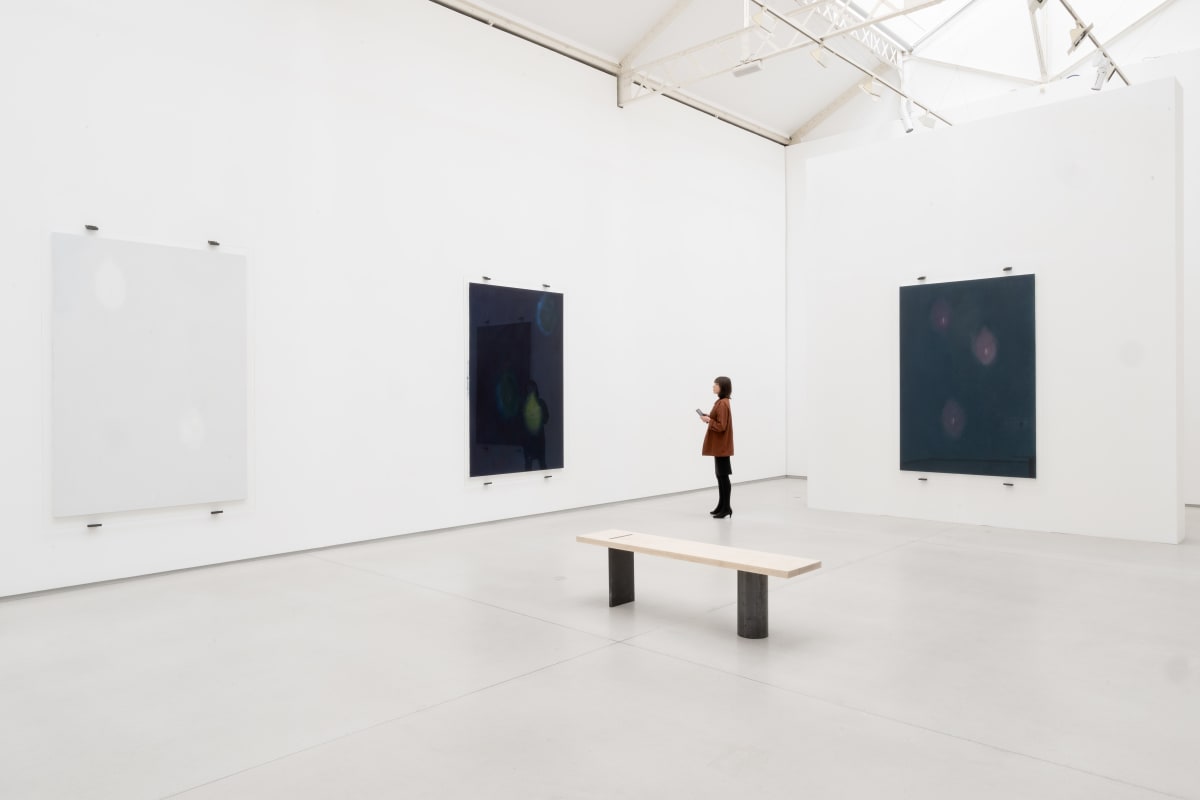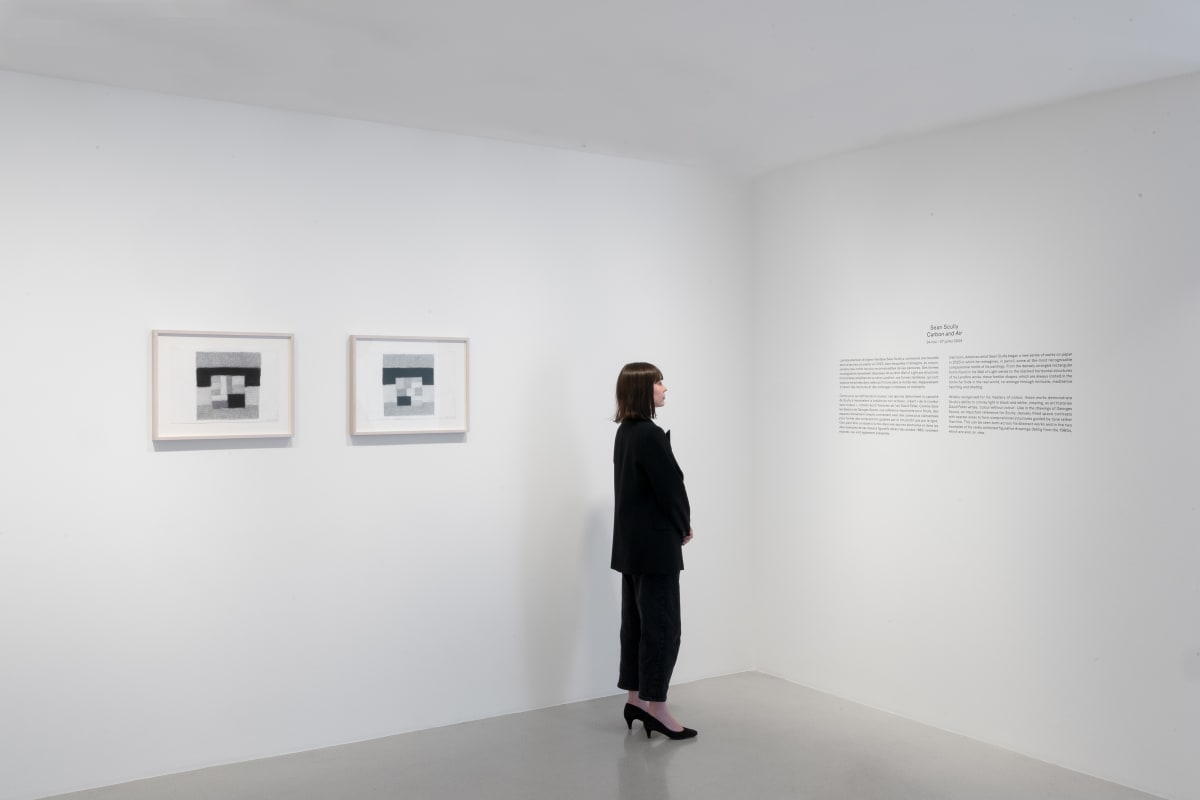

Jack Pierson
Overview
'My work documents the tragedy inherent in the search for glamour.'
Jack Pierson's practice incorporates photography, sculpture, installation, painting and found objects through which he explores the varied emotional undercurrents of daily life, from the intimacy of romantic attachment to the idealisation of wanderlust. His large-scale wall sculptures composed of letters in different sizes and materials are diametrically opposed to the hazy, soft-focus effect of his photographs. These photographic works have been compared to images from road movies, whose rapturous race towards fulfilment have become etched into the American landscape, while his Word Pieces are similarly rooted in nostalgia. Rather than valorising the American Dream, however, he reveals the underbelly of this seductive ideal.
In composing his Word Pieces, Pierson collects abandoned signage from closed businesses, such as cinema marquees, casinos or storefronts, as well as road signs, neons and other cultural ephemera. The mid-century lettering evokes a sense of nostalgia, while the phrases are sourced from the contemporary vernacular – overheard in cafés and his daily commute, or borrowed from political aphorisms and advertising slogans – in works that defamiliarise everyday language. In the 1990s, Pierson primarily used slogans that were a melancholy reminder of the bygone Hollywood heyday, while his more recent works explore philosophical ideas. Concise and sometimes laconic, these works tap into the poetics of modern culture, using classical, literary and biblical quotations that evoke subtle associations for the viewer. They can be considered an American variant of concrete poetry, where language itself is represented through the skillful combination of word and material.
Jack Pierson's practice incorporates photography, sculpture, installation, painting and found objects through which he explores the varied emotional undercurrents of daily life, from the intimacy of romantic attachment to the idealisation of wanderlust. His large-scale wall sculptures composed of letters in different sizes and materials are diametrically opposed to the hazy, soft-focus effect of his photographs. These photographic works have been compared to images from road movies, whose rapturous race towards fulfilment have become etched into the American landscape, while his Word Pieces are similarly rooted in nostalgia. Rather than valorising the American Dream, however, he reveals the underbelly of this seductive ideal.
In composing his Word Pieces, Pierson collects abandoned signage from closed businesses, such as cinema marquees, casinos or storefronts, as well as road signs, neons and other cultural ephemera. The mid-century lettering evokes a sense of nostalgia, while the phrases are sourced from the contemporary vernacular – overheard in cafés and his daily commute, or borrowed from political aphorisms and advertising slogans – in works that defamiliarise everyday language. In the 1990s, Pierson primarily used slogans that were a melancholy reminder of the bygone Hollywood heyday, while his more recent works explore philosophical ideas. Concise and sometimes laconic, these works tap into the poetics of modern culture, using classical, literary and biblical quotations that evoke subtle associations for the viewer. They can be considered an American variant of concrete poetry, where language itself is represented through the skillful combination of word and material.
His photographic practice is imbued with a poignant sense of introspection, in sea and landscapes that suggest the nostalgia of summer through their atmospheric, even abstract, qualities. The curator Peter Weiermair has written: 'Pierson is more intent on reflecting the fictional rather than the documentary qualities of the medium. As such, photography becomes a medium to escape from the world […] transforming real circumstances into a state of glamour.' He has also produced a series of fictionalised self-portraits, none of which feature the artist himself, instead representing the arc of a lifetime as a progression from young boy to old man.
Born in Plymouth, Massachusetts, Pierson lives and works in New York and southern California. While studying at the Massachusetts College of Art in the 1980s, he became part of the Boston School group with fellow photographers David Armstrong, Philip-Lorca Dicorcia, Nan Goldin and Mark Morrisroe. His work has recently been shown at institutions including the Museum of Contemporary Art Chicago (2020, 2017, 2014); Wadsworth Atheneum Museum of Art, Hartford, USA (2019); and The Geffen Contemporary at MOCA, Los Angeles (2016), as well as solo shows at Aspen Art Museum (2017); CAC Málaga (2009); and the Irish Museum of Modern Art, Dublin (2008).
Videos






Artworks
Exhibitions
Publications







